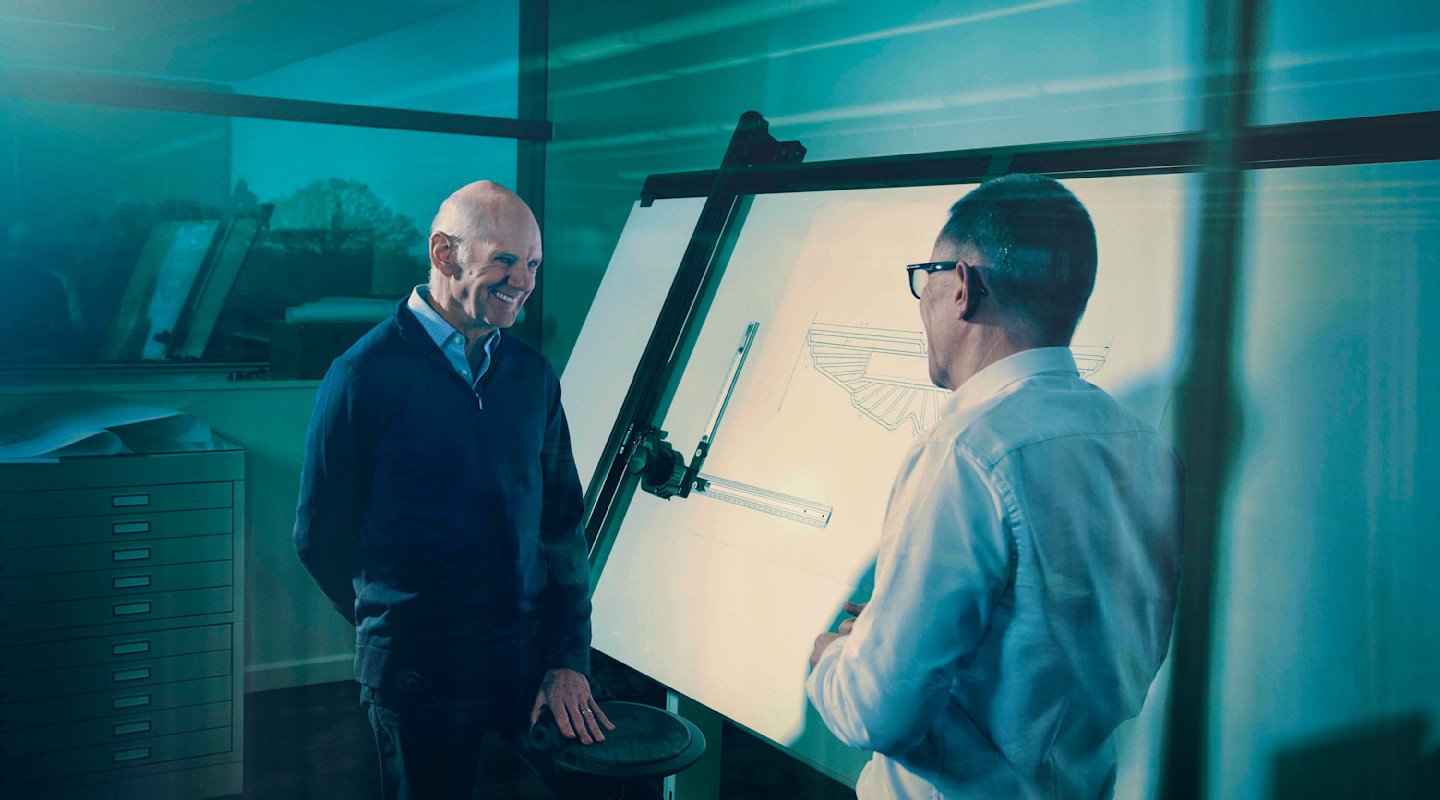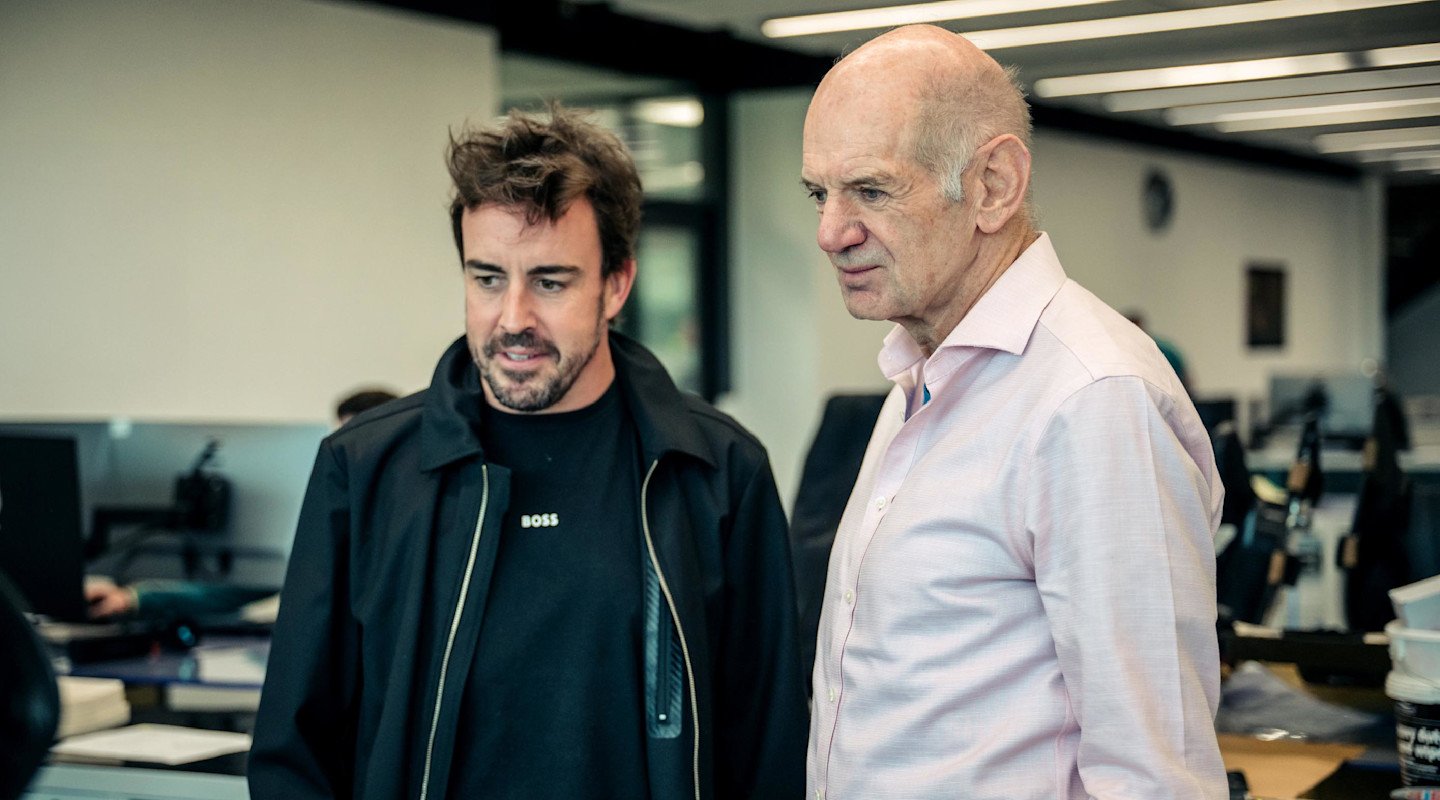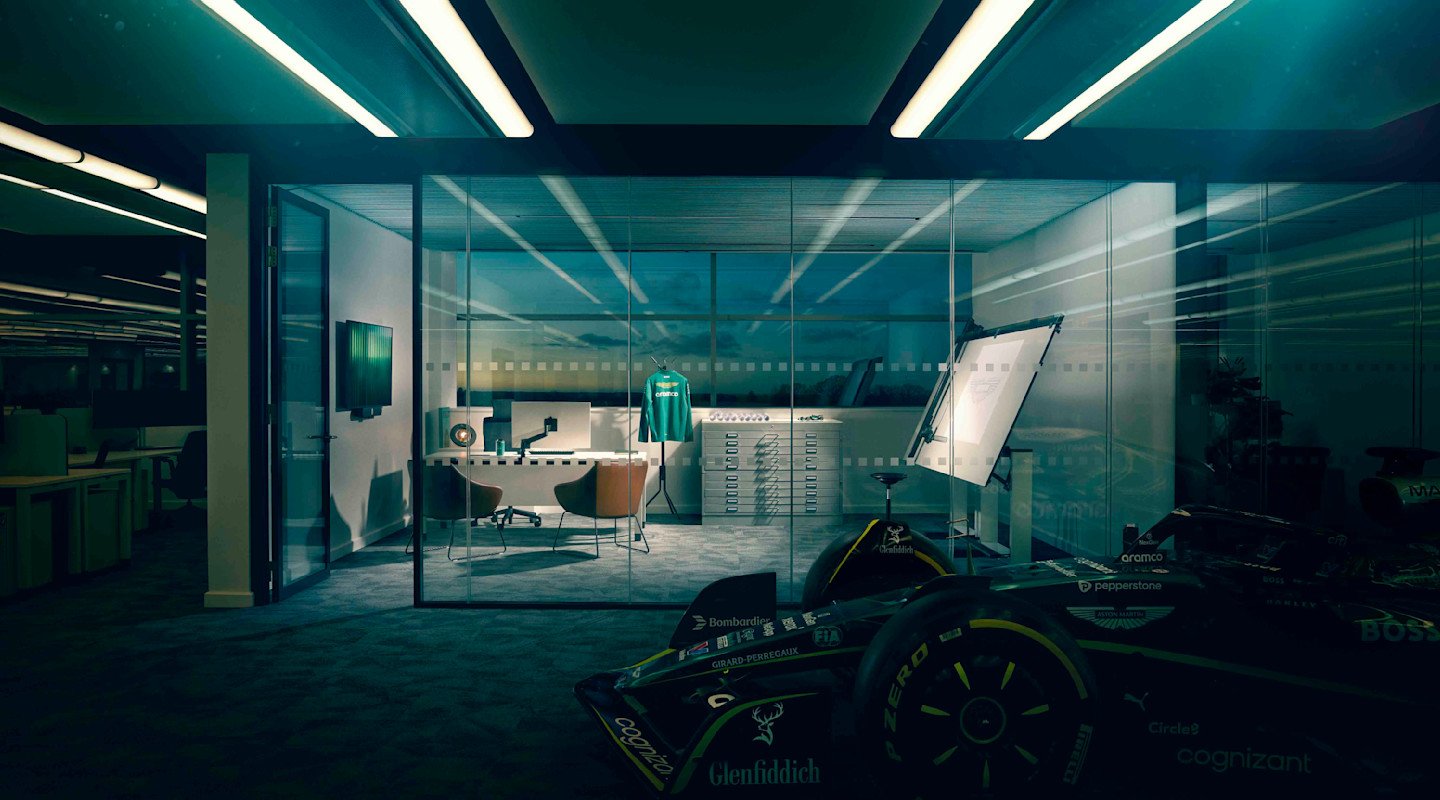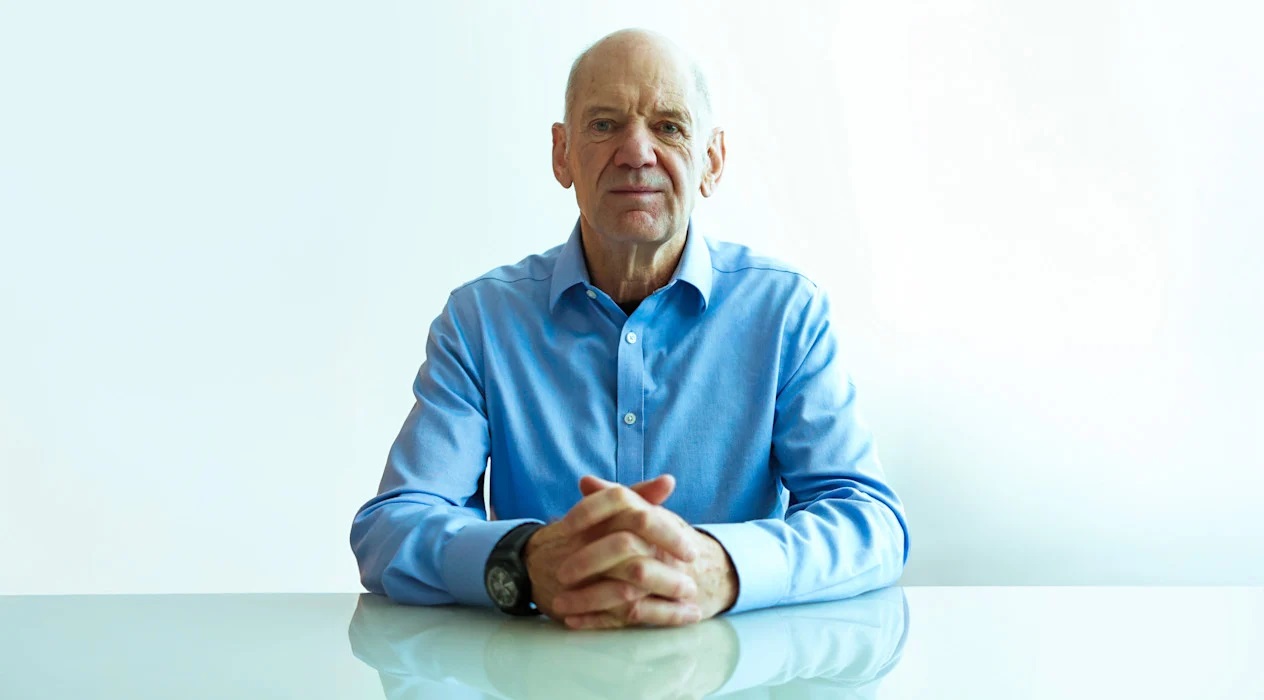F1 News: In interview Newey pinpoints where Aston Martin is weak
Two months into life at Aston Martin Aramco, in the latest edition of our candid UNDERCUT interview series, Formula One’s foremost designer, Adrian Newey, exclusively reveals what he really thinks about his new team, why there’s more scope for innovation with the 2026 regulations than meets the eye and why he needs to get inside the minds of Lance Stroll and Fernando Alonso to build a faster car.
Adrian Newey is just being himself.
He’s at his drawing board, self-propelling pencil in hand, thoroughly absorbed in the A0 sheet of paper in front of him. This interview is in his diary and should have started about 15 minutes ago, and were it anyone else, a polite interruption would be the thing to do… but it’s Adrian Newey. He’s a big proponent of the five percent inspiration, 95 percent perspiration approach to F1 design, but what if this is one of those five percent moments? Do you want to interrupt that? You do not. Fortunately for us, he snaps out of his trance-like focus and exits his office at the AMR Technology Campus, ready for his first interview since joining the team in March.
Related Article: Formula 1 News: Not Newey’s job to ‘fix’ 2025 Aston – Alonso
Adrian’s career as a race car designer is well into a fifth, trophy-laden decade. He’s designed winning sports cars and champion IndyCars, but his renown stems from remarkable achievements in F1, designing, across 35 years, winning – and often dominant – cars. In the pantheon of F1 design greats, the longevity of his career and the sheer weight of silverware that has accompanied it have elevated him to a position of pre-eminence, joining and then displacing names like Forghieri, Chapman and Byrne.
Those names are, perhaps, a better measure against which to assess him than more modern equivalents. Adrian is, in the most respectful sense possible, a throwback: the last designer in F1 to have developed a skill set drawing – and seeing – the whole car, working in teams small enough to share a dinner table. It’s a long way from modern, compartmentalized design efforts in which hundreds of specialists each weave their own corner of the tapestry. But the ability to do the former and manage the latter has led to a career that is, perhaps, unique.
The adulation that comes from standing atop the pinnacle isn’t something that sits comfortably on his shoulders. In fact, he actively dislikes it. What he does like, however, is the challenge of a new engineering puzzle and the opportunity to work on it with a group of like-minded people.
Two months into his tenure as our Managing Technical Partner, in this exclusive UNDERCUT interview, he’s here to give us a characteristically frank assessment of where the team is, what it needs to do to succeed in the future, and just what those challenges are, as a new set of chassis and engine regulations loom large on the horizon. He’s also happy to delve into his own back story of just what it is that has made him the foremost F1 designer of his – or any other – generation.
Before we get into it, can you explain the thinking behind your job title? Managing Technical Partner is a new one for Formula One.
“When I was chatting to [Executive Chairman] Lawrence Stroll, discussing the future, he came up with the suggestion of Managing Technical Partner. Lawrence has very kindly trusted me to be his partner, developing the technical side of the team, driving our technical abilities forward and improving our engineering prowess.”
You’ve been with the team for a couple of months. Is it what you imagined?
“When you join a new team, it’s always difficult to know what the experience is going to be. Every time I’ve joined a new team, each has been very different.
“The first thing I can say about the team is that everyone has been very welcoming, which is great – it hasn’t always been the case when I’ve started with a new team.
“This is a team that has grown a lot in headcount over a very short space of time. We have great facilities, people are keen and enthusiastic, and it is our job to get on and get everything working smoothly.
“F1 is about people: yes, there is a lot of technology, but it’s people who drive things forward.”
Lawrence’s vision has created a great facility – the best facility in F1 – but it is important that we now optimise how we use it.
Is it part of your role to get the best out of people and instill confidence? How do you propagate a winning mentality?
“Winning mentality is always a difficult one. If it’s a team that hasn’t had much success over the years, then not winning becomes the norm. It’s important to create the self-belief that we have the collective abilities to succeed. This is all part of trying to drive things forward.
“Now, I’m not a cheerleader, and I’m not like an American football coach who will stand up at the front of a room and give a rousing speech. It’s about working with everybody and developing together.”
Is there an element of leading by example?
“I suppose I work in two ways really: one way is thinking about the problem of what we need to do to make the cars go quicker; looking at the regulations, talking to the drivers, trying to get the information in, and then proposing some solutions via the drawing board.
“The other way – what we’re talking about here – is working with the people in the engineering departments, looking at their work, discussing their ideas, trying to move us forward.”
Is the state-of-the-art AMR Technology Campus, complete with new simulator and most advanced wind tunnel in F1, the ultimate playground for the sport’s greatest designer?
“Lawrence’s vision has created a great facility – the best facility in F1 – but it is important that we now optimize how we use it. Again, this is a people sport. My previous team had one of the worst wind tunnels in F1 and operates out of an unremarkable series of buildings on an industrial estate, but it managed to get everybody working together and developed a great group of people.
“We have many talented people – also a few areas that need strengthening with greater numbers – and we need to get everyone working together better, using these tools and developing our abilities.”
Both the chassis regulations and power unit regulations are changing at the same time. This is… interesting… and slightly scary.
You’ve built dominant cars, and Andy Cowell has created dominant engines. The team has brought both of you together. Is it a match made in heaven?
“I’ve known Andy for a very long time, going back to my McLaren days, when he was at Mercedes High Performance Engines. I’ve got a huge amount of respect for him, and his track record speaks for itself.
“I think our roles here are somewhat different. Andy’s very much looking at the whole company and how everything fits together. I’m concentrating more on the engineering side, but having said that, there’s a lot of overlap: I feed ideas into him and he feeds ideas into me, so there’s very good synergy.”

Your focus is on next season and the big regulation change that’s coming. What do you make of the 2026 regulations?
“My thoughts on the ’26 regulations are similar to what my thoughts were about the big regulation change for 2022: initially thinking the regulations were so prescriptive that there wasn’t much left here [for a designer], but then you start to drill into the detail and realise there’s more flexibility for innovation and different approaches than first meets the eye.
“We saw that at the start of 2022, with teams taking really quite different directions. Now, of course, four seasons on, they’ve largely converged, but initially that wasn’t the case. Variation between teams is great. It’s all a bit boring if the cars look identical and the only way you can tell them apart is the livery.
“I think there’s a high probability that in ’26 we’ll see something similar to ’22. There’s enough flexibility in the regulations, and I’m sure people will come up with different solutions. Some of those will be dropped over the first two or three years as teams start to converge.
“The other aspect of this is that, for the first time I can remember, we’ve got both the chassis regulations and power unit regulations changing at the same time. This is… interesting… and slightly scary. Both the new aerodynamic rules and the PU regulations present opportunities. I would expect to see a range of aero solutions and there could be variation in PU performance across the grid to begin with – which is what happened when the hybrid regulations first came in, in 2014.
“Next year marks the start of our works partnership with Honda. I’ve got a lot of trust in Honda and a huge amount of respect for them, having worked with them before. They took a year out of F1 and so, to some extent, they’re playing catch-up, but they’re a great group of engineers and very much an engineering-led company.”
Can you tell us anything about what your first Aston Martin F1 car will look like?
“I imagine it will be green! [Laughs.]”
There’s no point in daydreaming about the future. It’s about getting on and doing the work. If we do our work correctly, hopefully things will come together.
How do you prioritize which design directions to follow? Is it purely about lap-time, or do you look at factors like development potential?
“We’re pursuing various avenues. Whether those are different avenues to others and whether they will be a better avenue than others, we’ve got no idea. That’s part of the intrigue of F1, especially when you get these big rule changes.
“It’s always difficult, when you have a big regulation change like this, and all teams are resource-limited, because of the budget cap and simply because of staffing levels. The team shapes the approach, to a certain extent.
“One area of our team that needs to grow is the aerodynamics department. But in the short term that means we’ve got to decide which directions are going to be the most fruitful and really concentrate our resources on those.
“Of course, in doing that, there’s always a danger that we’ve missed an avenue. Quite often, you have to go a long way down a certain branch before you know whether it’s going to be a fruitful one or not. It’s sometimes the case that a branch might not start off looking that promising, because it’s very new and underdeveloped, but actually it’s got more fruit at the end.”
Is this where your expertise and experience can guide the team to choose the right directions?
“I never like to say to a fellow engineer that they shouldn’t pursue something, but given the short timescales, in this case, I have to do that.”
Do you have any involvement with the AMR25?
“Lawrence understandably wants us to do as well as we can in 2025 so there’s a small team still working on this year’s car from an aerodynamics point of view. I’ve had a few lunchtime conversations with that small group, discussing the car and what we can do about it.”
What about Lance and Fernando?
“I’ve also spoken extensively with both Lance and Fernando, getting their input on the strengths and weaknesses of the current car, the correlation between the current car and the driver-in-the-loop simulator, and so on. The drivers are an essential part of the feedback loop of how you modify the engineering organisation and the way you go about things.”

How difficult – or easy – is it in the modern era to translate driver feedback into development?
“It’s a process that has changed hugely over the years. For me, the big change between when I first started and where we are now is the advent of data recorders. It’s easier now to take what the driver is saying and look at how that is showing up in the data.
“At the same time, drivers are intuitive beasts. They will modify their driving style to cover handling deficits in the car, and report on how the car responds to that modified style, perhaps without realizing that they’ve changed what they’re doing. So, you can’t wholly rely on data, you have to get inside their heads too.”
Have you found that process easier since you started to race yourself?
“I was well into my forties when I started racing – a bit of mid-life crisis, you could say!
“I think it has helped me understand the vehicle dynamics a little better when a driver is explaining what they’re feeling, how changing the inputs to the car can impact its balance.”
You have a reputation for thinking about the car holistically, which isn’t necessarily something other designers do. Where does that whole-car thinking originate?
“I think it’s various things. From the age of about 10, I decided I wanted to work in motor racing as a designer – I don’t think I knew the word ‘engineer’ at that point. Through my teens, I read every book I could find about the performance of racing cars. This was the early 1970s so they didn’t have much about aerodynamic theory, as aerodynamics was very new in F1. I think that’s partially why I chose to study aeronautical engineering at university.
“I joined the Fittipaldi F1 team as an aerodynamicist in 1980, then moved to a production racing car manufacturer – March – where I worked as a junior draftsman during the week and as a race engineer on the weekends in F2. So, two years out of university, reaIly at a very young age, I had experience of the three main disciplines: aerodynamics, mechanical design and vehicle dynamics.”
Legend has it you can visualize air moving around a car whenever you’re looking at one. Can you put us in the mind of Adrian Newey for a moment and tell us what you’re seeing that others can’t?
“I’m not sure anybody wants to be in my mind!
“It’s very difficult for me to say because I’m not somebody else. What I see partly comes from practice, but perhaps also a little bit of genetics. I come from quite an artistic family, on both my father’s and mother’s side; I was always inquisitive and quite a good artist at school, and have always been sketching, designing and playing around with models. I think that’s important: taking sketches and turning them into a 3D shape – in my case by physically making a model.
“It’s the 10,000-hour rule: if you do something from a young age, work at it, you develop new pathways [in the brain] to become an expert at it.
“Five percent inspiration, 95 percent perspiration; F1 is an engineering discipline with a creative side – but it has to be creative for an engineering reason to make the car go faster. It’s that combination that makes it so fascinating.”
If I have a drawing on the drawing board, with 100 lines on it, I’ve probably drawn 200 lines to get to that point and rubbed a hundred out.
Very few people have a seismic impact on the F1 landscape. The likes of Michael Schumacher, Lewis Hamilton, Colin Chapman and Ross Brawn, for example. What’s it like being one of them?
“I never think about it, to be perfectly honest. I’m just me. I enjoy my job and that’s why I’m still doing it after all these years. I like the variety of it. I like working on my own, trying to come up with ideas, but I also like working with everybody else, discussing their ideas, seeing how they develop ideas.
“I like working with drivers too, and the immediate feedback you get from them – which of course, can be blunt and a little bit painful sometimes – but you need to know how you’re doing. It makes F1 a very satisfying engineering discipline to be involved with.”
The big question: can you replicate what you achieved at other teams here at Aston Martin Aramco?
“There’s no point in daydreaming about the future. It’s about getting on and doing the work. If we do our work correctly, hopefully things will come together.”
Given your track record, many people now think Aston Martin Aramco becoming a World Championship-winning team is almost inevitable, but there are no magic bullets in F1…
“A modern F1 car is a very complicated beast. It’s physically complex, just because of the sheer number of parts – but that complexity is multiplied by the amount of simulation that goes into producing it. F1 teams are increasingly dependent on simulation tools: computational fluid dynamics (CFD), the wind tunnel itself and the correlation between the real car on track and those tools.
“It’s an area that demands a lot of development. You can buy a CFD package off the shelf, but you need to tweak it, learn to use it, likewise a wind tunnel, where you can buy hardware but have to write software to drive the motion system. It’s the same with a driver-in-the-loop simulator: you can have the best motion system in the world, but if you don’t have the modelling to go with it, and correlation with the aero model, correlation with the tire model and so on, it won’t be of any use. It all takes time.”
For all the technology, you’re famed for preferring a pencil to using CAD. Are the old ways sometimes the best?
“Much is made of me using a drawing board rather than a CAD system! For me, personally, it’s like a language – my first language. I grew up on a drawing board; CAD systems really didn’t come of age until the 1990s. I can use CAD, at a basic level, but I’m going to be slower.
“If I have a drawing on the drawing board, with 100 lines on it, I’ve probably drawn 200 lines to get to that point and rubbed a hundred out. I change things as I develop an idea, and on the board I can have everything out there in front of me at a decent scale, rather than zooming into individual components, which is what you tend to do in CAD.

“My way of working has some plus-points – but also some minuses, probably the biggest one being that everything I do has to be translated. When I’m flat out, there are probably three people scanning my drawings and turning them into surfaces. If you had too many people in the organization working with a drawing board, it would be very inefficient.
“Increasingly though, with parametric modelling in CAD systems, you can go straight into that. It’s developed a lot over the last decade and no doubt will continue to develop, and at some point, I’ll be on the wrong medium – but I think by then I’ll be retired.”
In the modern era, the cameras love to focus on you prowling around on the grid with a large notebook. We have to ask: what’s in the notebook?
“To be honest, the notebook doesn’t have much in it, it’s just the holder for lots of scraps of A4 paper. Typically, those are sketches, ideas, prompts.
“It’s just a way of quickly getting down whatever’s ticking around in my head. It’s a way of developing ideas and then communicating them, though most of them are likely unintelligible to anyone else. Sometimes, if I can’t read my own writing, they’re unintelligible to me too!”
Why haven’t we seen you at a Grand Prix since you joined the team?
“The deadlines we have in modern F1 seem to be far earlier than they used to be 20 years ago, and there are a lot of them coming up for the 2026 car, which is where my concentration has been, so I’ve not been at the track.”
Can we expect to see you at the track any time soon?
“I plan to be in Monaco…
“…with the notebook.”
